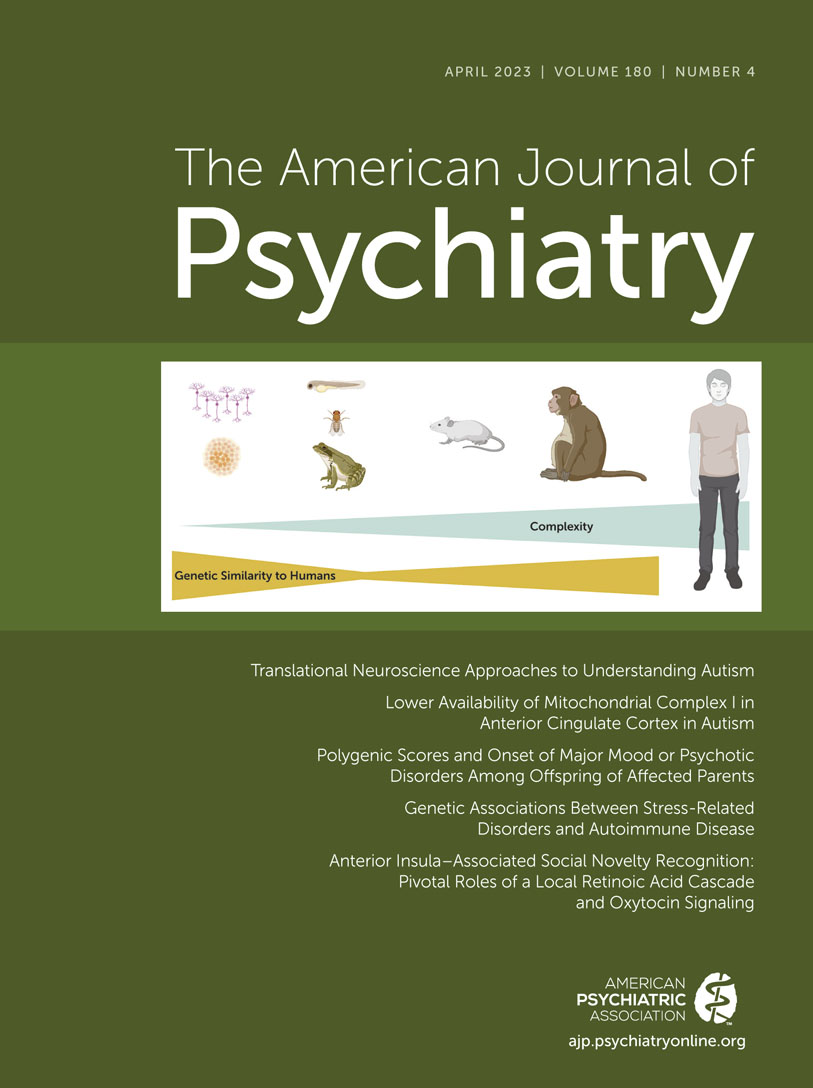Lower Availability of Mitochondrial Complex I in Anterior Cingulate Cortex in Autism: A Positron Emission Tomography Study
Abstract
Objective:
Mitochondrial dysfunction has been implicated in the pathophysiology of autism spectrum disorder (ASD) in previous studies of postmortem brain or peripheral samples. The authors investigated whether and where mitochondrial dysfunction occurs in the living brains of individuals with ASD and to identify the clinical correlates of detected mitochondrial dysfunction.
Methods:
This case-control study used positron emission tomography (PET) with 2-tert-butyl-4-chloro-5-{6-[2-(2-[18F]fluoroethoxy)-ethoxy]-pyridin-3-ylmethoxy}-2H-pyridazin-3-one ([18F]BCPP-EF), a radioligand that binds to the mitochondrial electron transport chain complex I, to examine the topographical distribution of mitochondrial dysfunction in living brains of individuals with ASD. Twenty-three adult males with high-functioning ASD, with no psychiatric comorbidities and free of psychotropic medication, and 24 typically developed males with no psychiatric diagnoses, matched with the ASD group on age, parental socioeconomic background, and IQ, underwent [18F]BCPP-EF PET measurements. Individuals with mitochondrial disease were excluded by clinical evaluation and blood tests for abnormalities in lactate and pyruvate levels.
Results:
Among the brain regions in which mitochondrial dysfunction has been reported in postmortem studies of autistic brains, participants with ASD had significantly decreased [18F]BCPP-EF availability specifically in the anterior cingulate cortex compared with typically developed participants. The regional specificity was revealed by a significant interaction between diagnosis and brain regions. Moreover, the lower [18F]BCPP-EF availability in the anterior cingulate cortex was significantly correlated with the more severe ASD core symptom of social communication deficits.
Conclusions:
This study provides direct evidence to link in vivo brain mitochondrial dysfunction with ASD pathophysiology and its communicational deficits. The findings support the possibility that mitochondrial electron transport chain complex I is a novel therapeutic target for ASD core symptoms.



